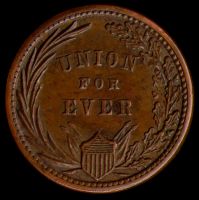Sergeant Albert Phelps
Fifth Iowa Volunteer Cavalry


Albert T. Phelps was a Canadian immigrant who enlisted in Company G of the Fifth Iowa Cavalry on October 3, 1861. The Official Roster indicates that the mustered as the Company Quartermaster Sergeant. When the company was detached to become part of Brackett's Battalion in February of 1864, he may have reverted to the rank of Private in the new organization. However, this would not last long, as he would be promoted to Captain before the Battalion ended its service. He lived until September 26, 1885.
The Roster includes some heroic exploits in which Sergeant Phelps played a major role. The following took place in 1863:
On the 14th of November, Major Young, of the Fifth Iowa Cavalry, commanding a select force of 400 men from the Fourth United States Cavalry, Seventeenth and Seventy-second Indiana Mounted Infantry, and Fifth Iowa Cavalry, under orders from Colonel Lowe, then in temporary command of the Second Cavalry Division, moved from Maysville to prevent a flank movement of the enemy across the Tennessee River. Major Young marched with his command across the mountains in rear of Huntsville, by way of Blevins Gap, to avoid the spies of the enemy. On the march a drove of hogs--which was being driven towards the enemy's camp--was captured, and, on arriving at the Tennessee River, the ferry boat was captured, and many valuable horses, which had been secreted by the enemy on the adjacent islands, were also captured. Destroying the ferry boat, the command marched to Triana, where the enemy had taken the precaution to keep all the boats on the opposite side of the river, to be sent over only when preconcerted signals were given, to indicate that Union troops were not in the vicinity of the landing. As the destruction of these boats was one of the main objects of the expedition, volunteers were called for to cross and secure them. Sergeant Phelps--of Company G--and eleven men from the Fifth Iowa Cavalry were selected from those who volunteered, and, by means of row boats and canoes, and under cover of sharpshooters, they crossed the river and captured two large ferry boats without losing a man. With these boats a party of thirty men started down the river, while Major Young's command marched down along the river bank to cooperate with them. Eight large boats were captured during the night and, at daybreak, the object of the expedition was accomplished, the boats were destroyed, and the command started on the return march to camp, where it arrived November 17th. The result of this expedition--in which the Fifth Iowa Cavalry bore such a conspicuous part--was the capture of a rebel Captain and eight of his men, nine large ferry boats captured and destroyed, two hundred fine mules and horses captured, one mill--used by the enemy--destroyed, and negroes brought in to complete the organization of a regiment, then in camp at Maysville. Of this expedition General Elliott, Chief of Cavalry, said: The success of the scout under command of Major J.M. Young, Fifth Iowa Cavalry, shows that he has been energetic, and shows good judgment in the management of his command.

Return to the Fifth Iowa Cavalry Personnel
Return to the History of the Fifth Iowa Cavalry